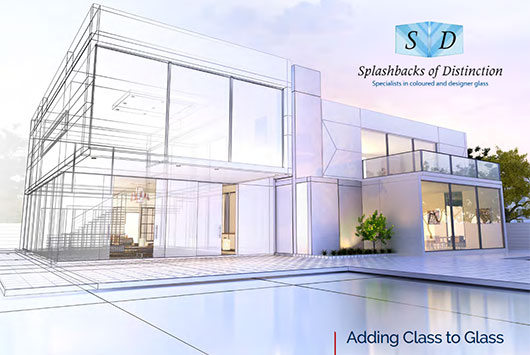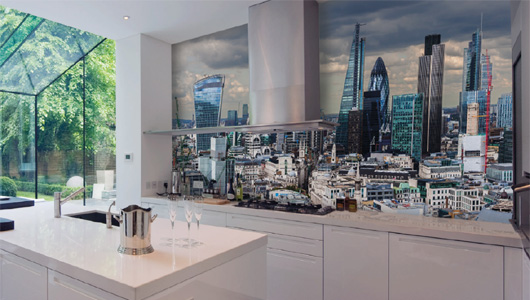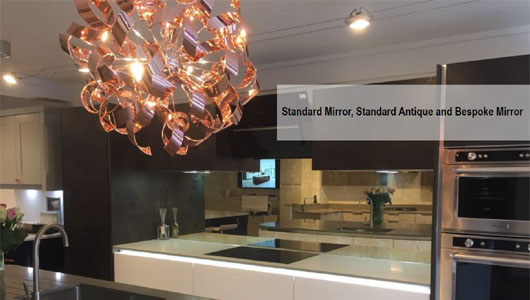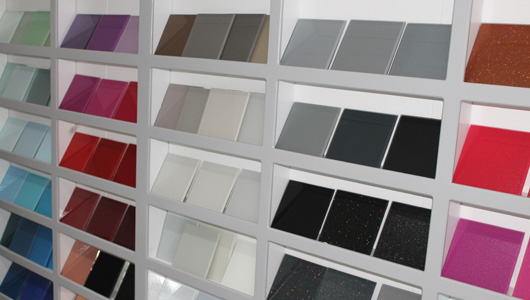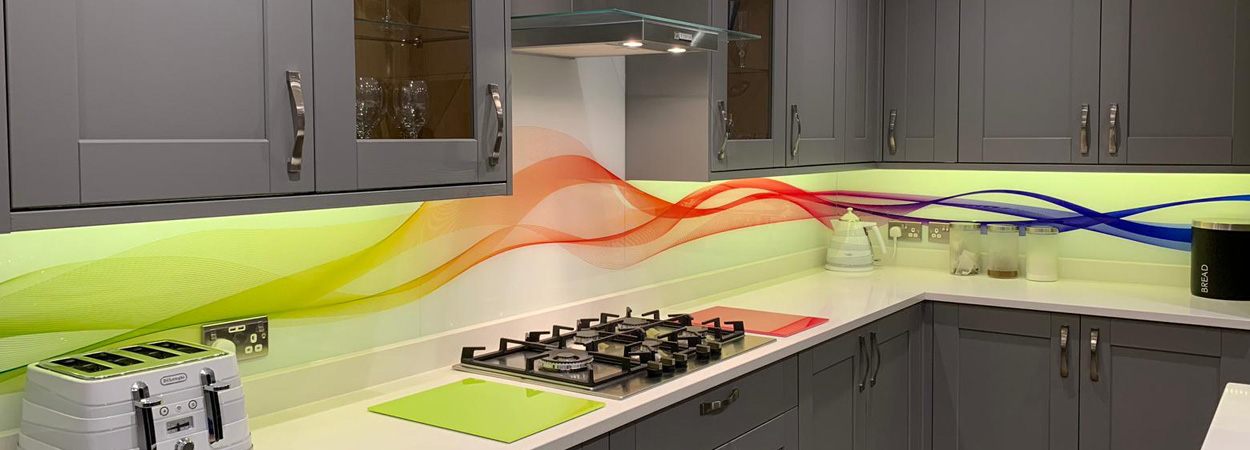
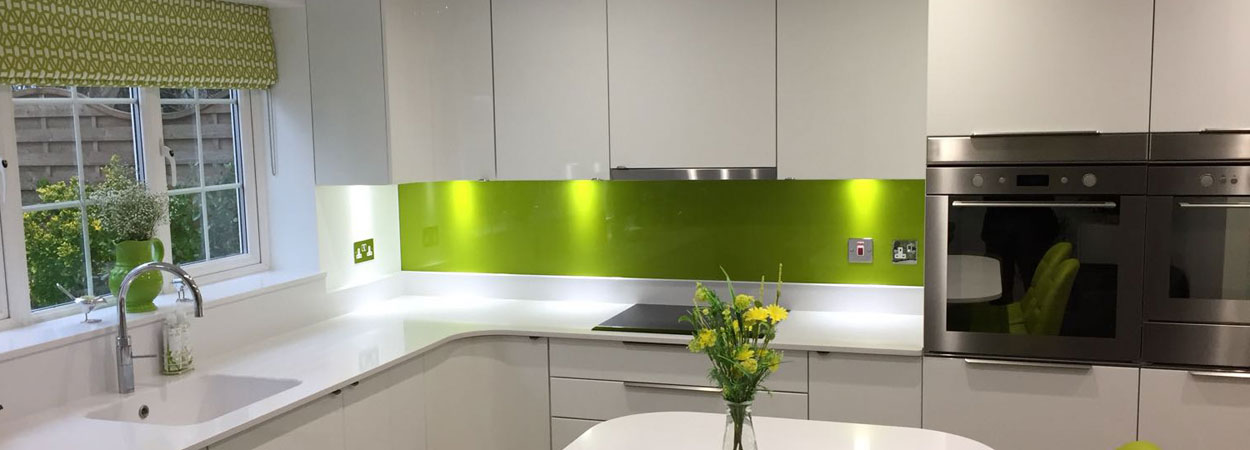
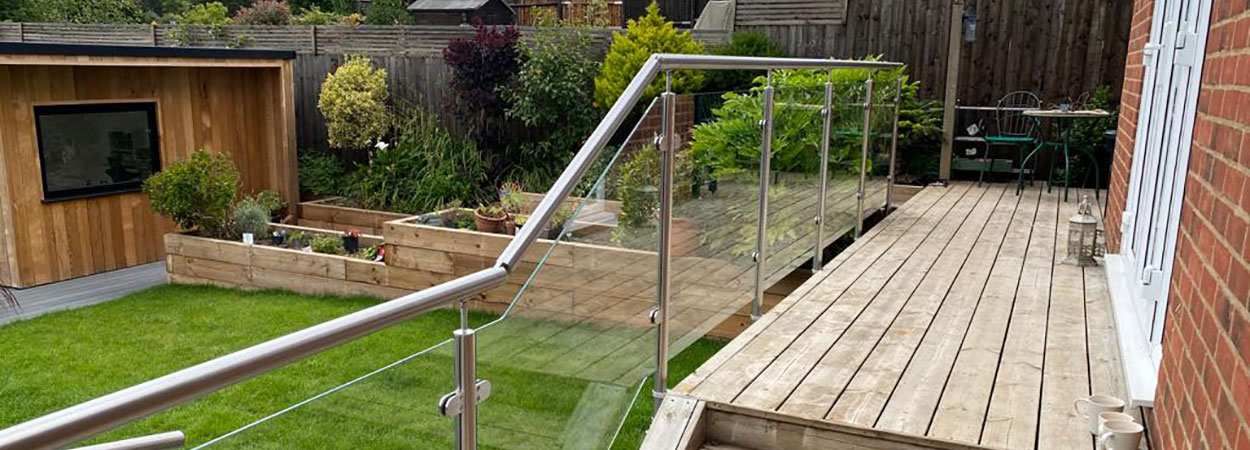
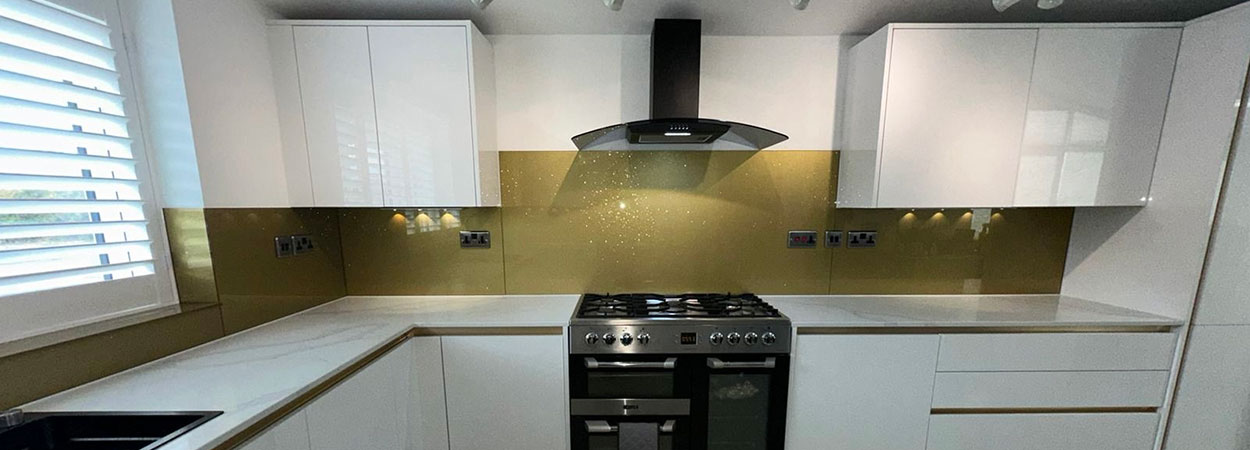
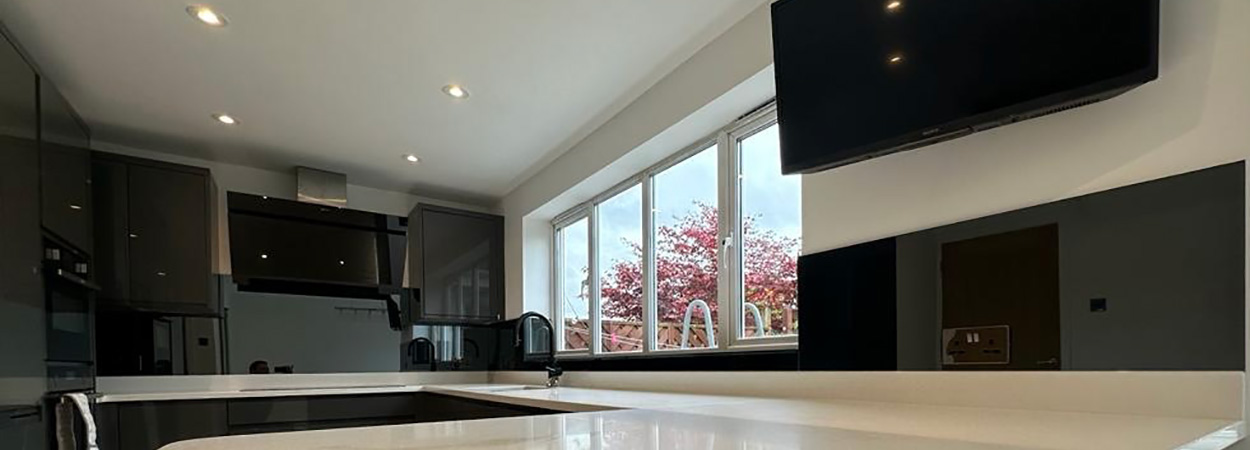
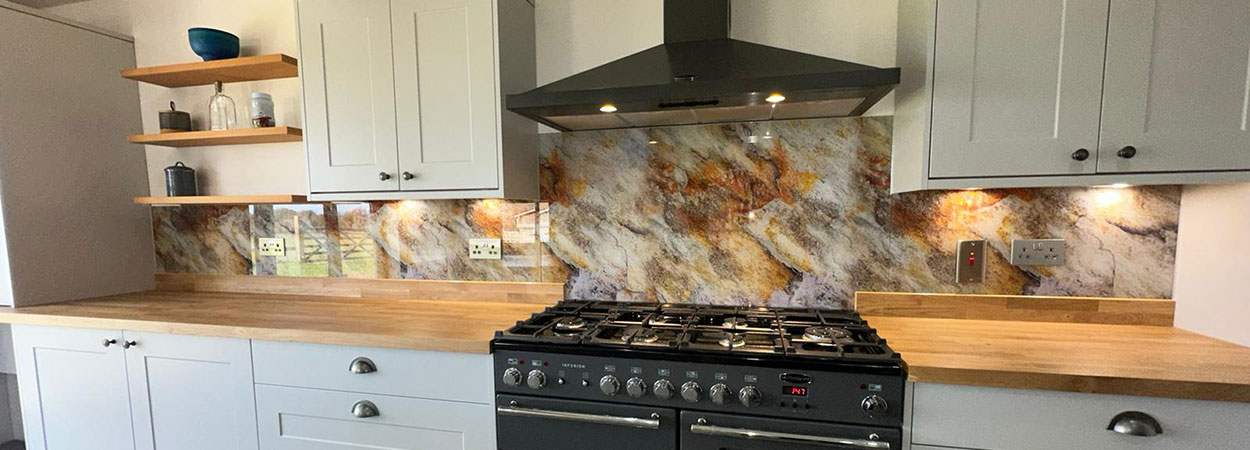


















Glass Splashbacks | Kitchen Splashbacks | Bathroom Splashbacks | Glass Balustrades | Bletchley, Buckinghamshire
Based in Stevenage, Hertfordshire, Splashbacks of Distinction have a real passion for toughened glass in and around the home. We have transformed many properties, both commercial and domestic with our glass splashbacks, for kitchens, bathrooms and living rooms. Our toughened glass balustrades, glass shelving and splashbacks with high resolution images have really caught the imagination of people who demand beauty and functionality in their homes and offices.

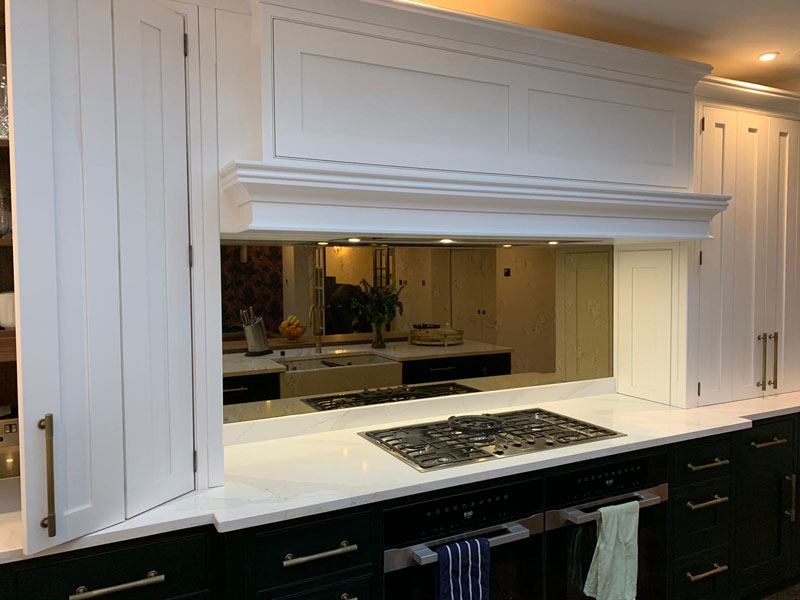
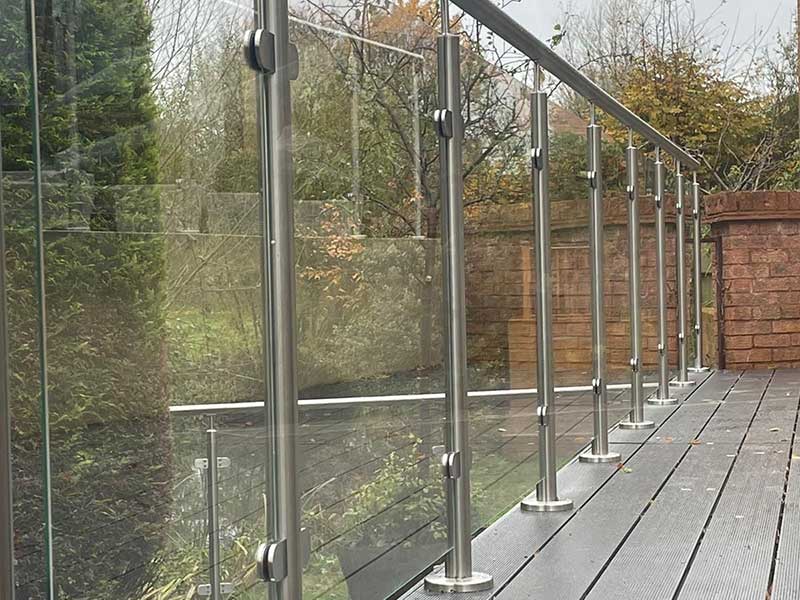
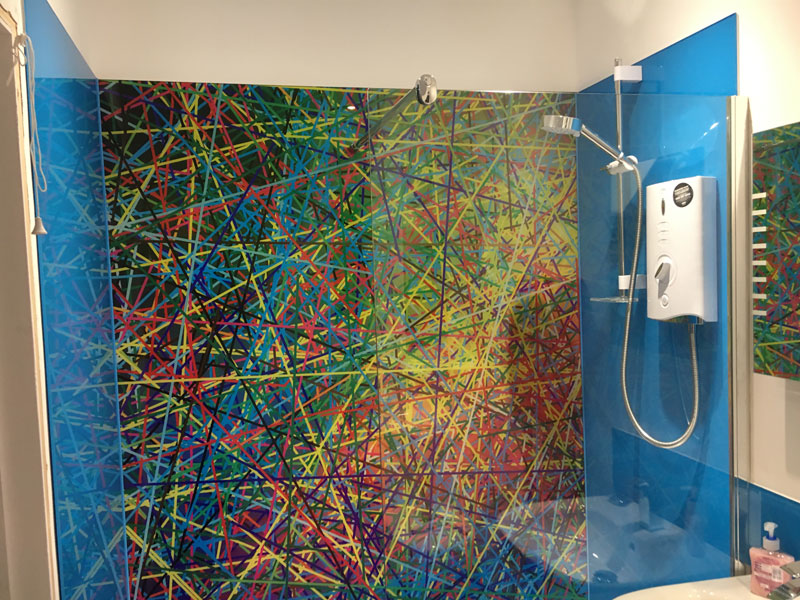
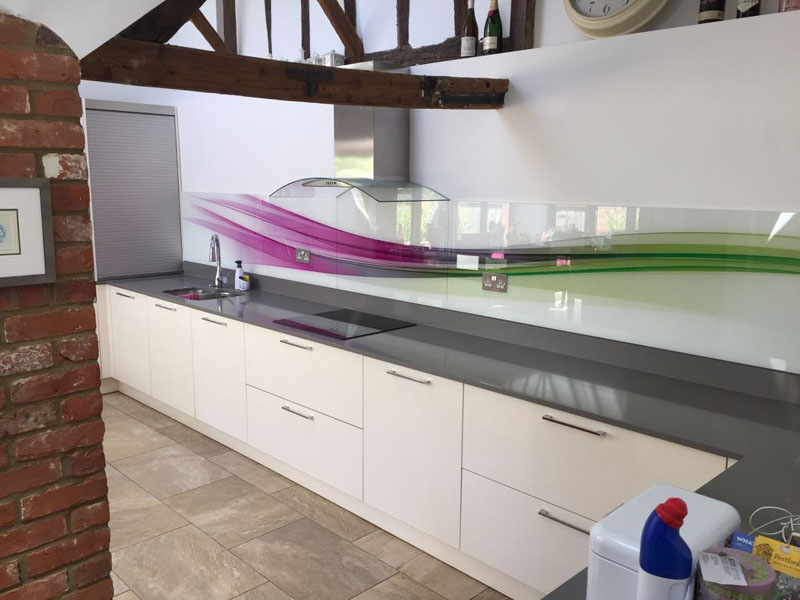
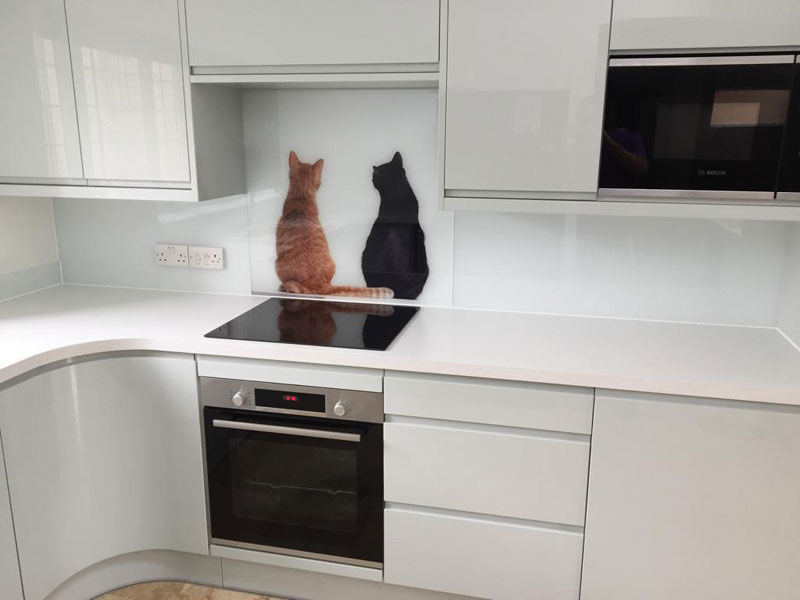
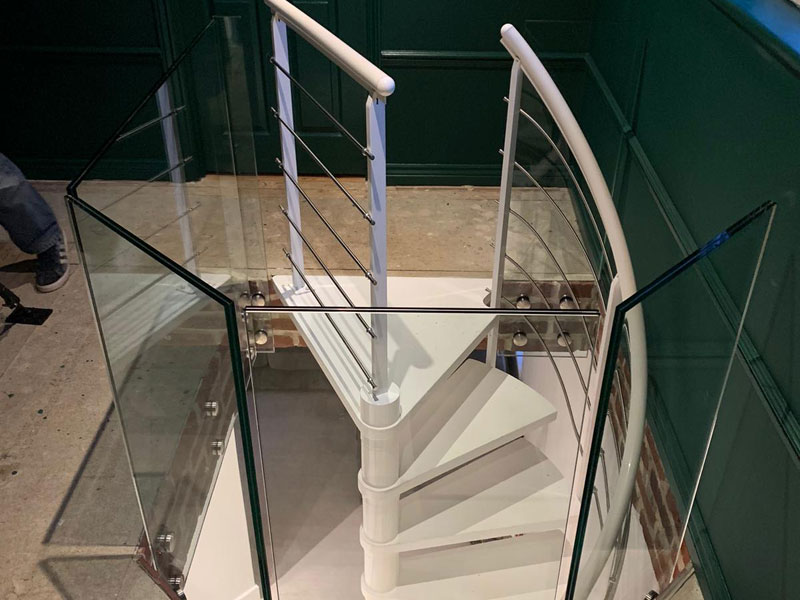
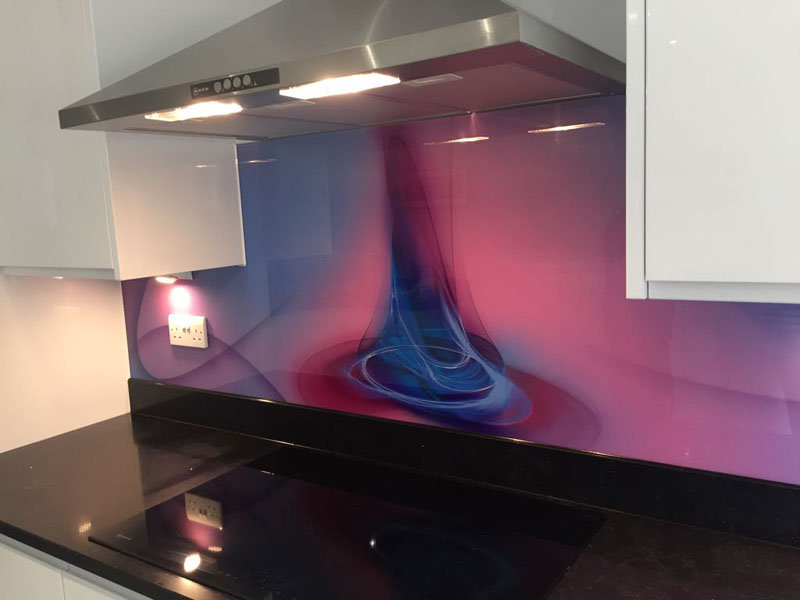
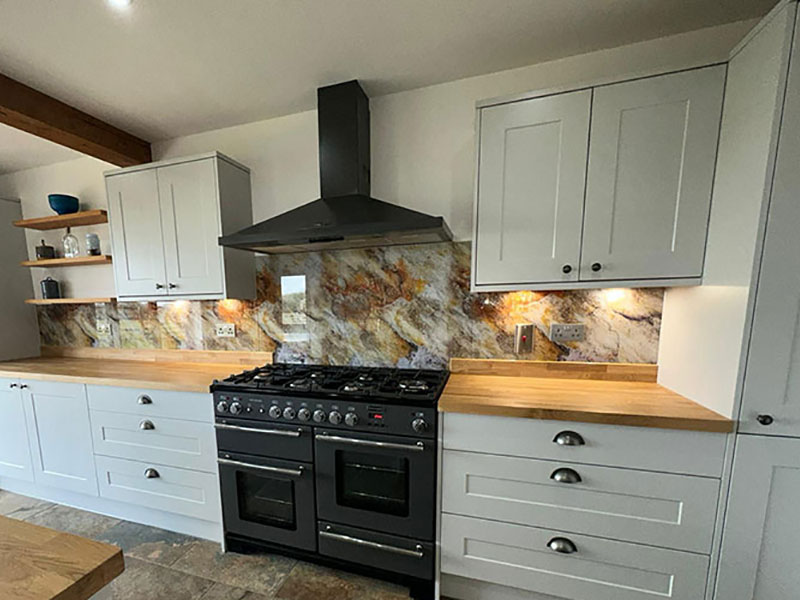
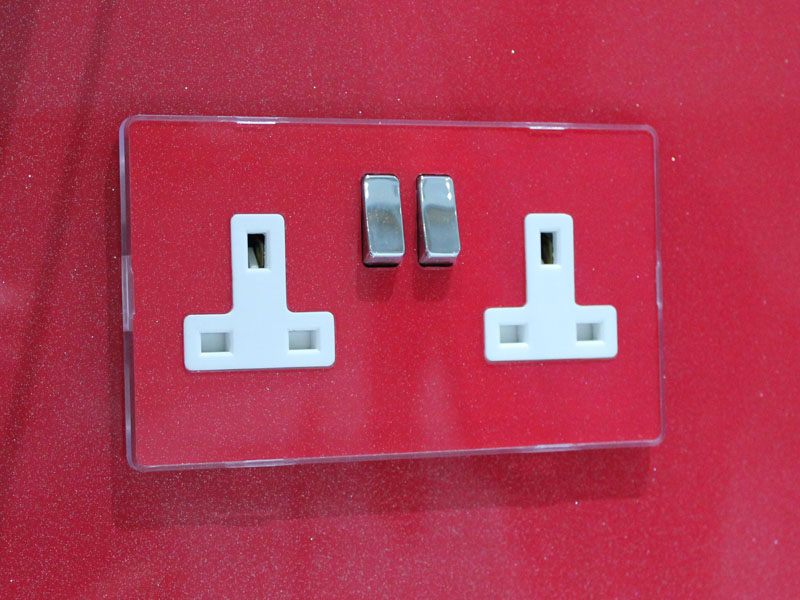


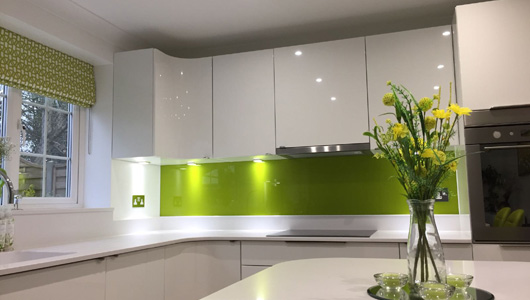
Splashbacks of Distinction
As one of the leaders in design and up to date technology, Splashbacks of Distinction are always on hand to deliver the highest standards of quality and service to our valued customers.
Splashbacks of Distinction provide a wonderful product that is suitable for kitchens, bathrooms, office spaces or anywhere you want a true touch of class.
Our splashbacks will add value and style to new and old kitchens and bathrooms. They are easy to clean and very hygienic. Every piece is toughened when manufactured so it is heat, water and impact proof.
A glass splashback and worktop will complement any bathroom, kitchen, bar area, laundry or shop. The sleek and seamless surface is the ultimate in elegance with zero visual interruption. Our glass splashbacks and worktops come in any colour and are also far easier to clean than ceramic tiles.
Should you require our services, please call or contact us by completing the simple contact form and we will get back to you as soon as possible.
Why not visit our show room or browse through our brochure
The Splashbacks of Distinction show room is located at Watton at Stone in Hertfordshire with easy access from Hertford, Stevenage and surrounding towns. It is close to both the A1 and A10 which makes it easily accessible from North London.
We have a wide range of samples, styles, colours and textures for you to see and touch. Our clients have told us that being able to visit our showroom really helps them to visualise and develop their ideas so that they really end up with exactly what they wanted. Our workshop is next to the showroom so you can also see our products as they are manufactured.
Hertfordshire Showroom Details
We have also created a stunning brochure with a selection from our range. This is available to download as a PDF by clicking on the link below.
Adding class to glass with our glass balustrades
Glass creates an illusion of more space and allows outside features to become part of the interior design. With glass it is possible to link two different spaces together without the barrier of a wall giving you the ability to enjoy your home and garden throughout the year.
Our frameless systems create a contemporary design which safely maximises any view, allowing natural light to spread across the living space. This solution can be used for internal stairs, external balconies, or to act as windbreaks in exposed areas outdoors.
Balustrade posts provide a classic, yet still very popular, design choice. Manufactured using 2.6mm thick walled, 48mm stainless steel for superior strength. This high quality, external grade steel maximises durability and minimises maintenance.
Glass spigots create a modern, minimalist design choice which maximises your view. Glass spigots are a large glass floor clamp that secures the glass vertically. The individual 'feet' allow for natural drainage making it an ideal choice for external areas including patio, and decked gardens, as well as poolside areas.
Massive range of printed splashbacks
The possibilities are almost endless. Whether you wish to modernise your home or office space, enhance it or create an eye-catching element in one of your rooms we are here to make your dream come true. Your wish is our command.
Perhaps a tropical landscape in the bathroom? How about a stylish banister or wall art? Or even a state-of-the art room divider?
If you own a business you might want to create a new inviting atmosphere for your customers or upgrade your existing space, making it uniquely stylish.
At Splashbacks of Distinction we can even recreate different surface patterns too. That wood-style surface you always wanted is now possible and it comes with all the advantages of glass. Our customers also love our granite and marble styles which are perfectly stunning.
NEW range of glass mirrors
When it comes to Mirrors, in either a Kitchen or Bathroom, nothing quite rivals the open, light and clean look that such a simple product offers.
Splashbacks of Distinction offer a range of standard mirrors available in Silver, Grey, Bronze and Peach with toughened options available.
Our bespoke antique mirrors offer depth and character, reflecting the beauty of its surroundings as well as enhancing them. Our collection of six unique mirrors can bring depth, glamour and a unique look to any space.
Choose from our range of antique mirror styles including moon, lava, mercury, Neptune, vincenzo, bronze vincenzo and bianco nero. Why not view our brochure or contact us today to see what we can do for you.
We can supply samples to help you choose
It is often very difficult to see what a particular colour or finish will look like from a picture. We understand that and can supply samples of your chosen splash back to enable you to get the best possible idea of what your dream kitchen or bathroom will look like before it is fitted.
We already have hundreds of samples available to look at in our showroom including different types of finishes such as glitter or sparkle. We can supply a sample in any colour or finish you would like from our extensive range.
Our splash backs are often so vibrant that it is very difficult to really appreciate them from a simple image and with some finishes, such as the mirrored finishes, it is virtually impossible. With a sample you can get a much clearer idea of how your splash back will look in your kitchen and how it will compliment the other colours and textures around it.
A complete service from measuring to final installation
At Splashbacks of Distinction we carefully manage the complete production, design and fitting of our bespoke, designer glass splashbacks.
Great care is taken to measure the intended space and our team will discuss your requirements and help with any ideas you have. Once we have finalised your design with our team, Splashbacks of Distinction can start to make the magic happen.
At every stage of the production process each of our panels is quality checked. Once one of our panels has left our workshop, we at Splashbacks of Distinction transport it and install it. Because each design is unique, it requires specialist knowledge to ensure correct fitting. Our team of experienced fitters will ensure that the panels are correctly aligned and mounted. We won't be happy until our customer is completely happy with the result.
Our team will work closely with you to create your dream design, ensuring the highest quality from start to finish so you can look forward to the magnificent result. We take pride in maintaining the highest of standards so that you, our customer can enjoy the beauty of our bespoke products.
The highest levels of safety and quality as standard
All of our glass splashbacks and panels are made using toughened glass. The glass is processed in accordance with the requirements of the relevant British and European quality standards BS EN 12150 : 2000 (Impact Tested BS EN 12600 : 2000).
You can rest assured that our glass splashbacks are safe and of the highest quality. Splashbacks of Distinction carries out rigorous checks to ensure that each panel is of the highest standard. At Splashbacks of Distinction we make sure that every panel is correctly aligned and fitted. Our toughened glass splashbacks are made to withstand daily use and will provide you with a strong, durable surface whilst maintaining their wonderful appeal and elegance. Reflecting natural light and brightening up dark corners, the splashbacks create an inviting, vibrant atmosphere.
Whether as a wall in a shower, as a room divider or a banister, our toughened glass will not let you down. It provides an excellent sealed barrier in kitchens and bathrooms where steam can cause havoc to walls and plaster.
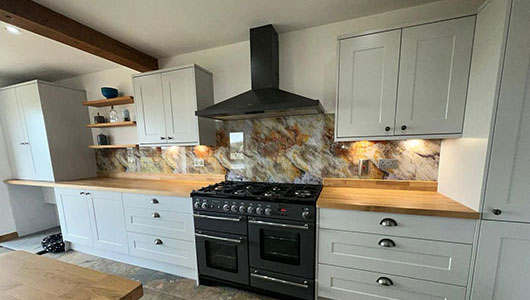
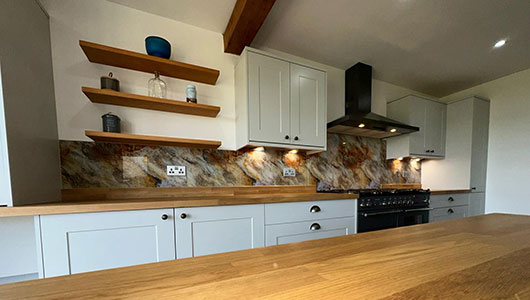
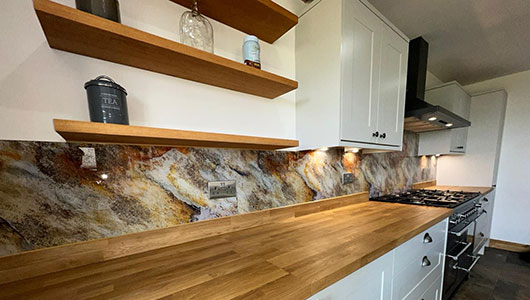
Wonderful customer service
I felt you really cared that we got the best effect for our kitchen and were happy to help us work through the options for as long as it took. Wonderful customer service and the splashback looks great.
(Kitchen splashback using design 010 from our own range)
Mrs Crawford, Aston”
Although we are based in Stevenage, Hertfordshire, we cover a far wider area. We currently cover the counties of Bedfordshire, Buckinghamshire, Cambridgeshire, Essex, Berkshire, Northamptonshire, Oxfordshire and London, but we are expanding rapidly, such is the demand for our top quality glass products. Should you want the quality that Splashbacks of Distinction offer, why not get in touch?
Recently we have supplied and fitted an assortment of quality toughened glass products in Bletchley, Buckinghamshire.
Where is Bletchley?
Bletchley is a constituent town of Milton Keynes, in Buckinghamshire. It is situated in the south-west of Milton Keynes, and is split between the civil parishes of Bletchley and Fenny Stratford and West Bletchley.
Some Bletchley history
The Bletchley name is Anglo-Saxon and means Blaecca's clearing. It was first recorded in manorial rolls in the 12th century as Bicchelai, then later as Blechelegh in the 13th century and Blecheley in the 14th to 16th centuries. Just to the south of Fenny Stratford, there was Romano-British town, on either side of Watling Street, the famous Roman road.
Bletchley is best known for Bletchley Park, the headquarters of Britain's World War II code breaking organisation, which is now a museum.
Bletchley Park
Bletchley Park is a world famous English country house and estate that is situated in Bletchley. The reason for this properties fame is that it became the principal centre of Allied code-breaking during the Second World War. The mansion was constructed during the years following 1883 for the financier and politician Sir Herbert Leon in the Victorian Gothic, Tudor, and Dutch Baroque styles, on the site of older buildings of the same name.
Bletchley plays a major part in the war effort
During World War II, Bletchley Park housed the Government Code and Cypher School, which regularly penetrated the secret communications of the Axis Powers, with the most important ones being the German Enigma and Lorenz ciphers. The team of code breakers at Bletchley Park included Alan Turing, Gordon Welchman, Hugh Alexander, Bill Tutte, and Stuart Milner-Barry. The nature of the work at Bletchley remained top secret until many years after the war had finished.
It has been strongly argued that the intelligence produced by the code breakers at Bletchley, shortened the war by two to possibly four years, and without it the outcome of the war would have been uncertain. The team at Bletchley Park devised automatic machinery to help with decryption, culminating in the development of Colossus, the world's first programmable digital electronic computer. Code breaking operations at Bletchley Park came to an end in 1946 and all information about the wartime operations was classified until the middle of the 1970s. This level of secrecy was not uncommon in the fields of military intelligence. It was only officially confirmed that MI6 and GCHQ actually existed, in the 1994 Intelligence Services Act, before then, it was all stuff of rumours and conjecture.
After the war Bletchley Park had various uses including as a teacher-training college and local GPO headquarters. By 1990 the huts in which the code breakers worked were being considered for demolition and redevelopment. The Bletchley Park Trust was formed in February 1992 to save large portions of the site from development.
More recently, Bletchley Park has been open to the public, featuring interpretive exhibits and huts that have been rebuilt to appear as they did during their wartime operations. It receives hundreds of thousands of visitors every year. The separate National Museum of Computing, which includes a working replica Bombe machine and a rebuilt Colossus computer, is housed in Block H on the Bletchley site.
The history of Bletchley Park
The Bletchley Park site appears in the Domesday Book of 1086 as part of the Manor of Eaton. Browne Willis built a mansion there in 1711, but after Thomas Harrison purchased the property in 1793 this was demolished. It was first known as Bletchley Park after its purchase by the architect Samuel Lipscomb Seckham in 1877, who built a domestic house to live in on the site. The estate of 581 acres was bought in 1883 by Sir Herbert Samuel Leon, who expanded the existing house into what some described as a maudlin and monstrous pile, combining Victorian Gothic, Tudor, and Dutch Baroque styles. The over mixing of so many architectural styles was viewed as being crass and vulgar by many. At his Christmas family gatherings there was a traditional fox hunting meet on Boxing Day with glasses of sloe gin from the butler, and the house was always a busy place at these times. Bletchley Park at this point had forty gardeners. After the death of Herbert Leon in 1926, the Bletchley estate continued to be occupied by his widow Fanny Leon until her death in 1937.
In 1938, the Bletchley mansion and much of the site was bought by a builder for a housing estate, but in May 1938 Admiral Sir Hugh Sinclair, head of the Secret Intelligence Service, bought the mansion and 58 acres of land for £6,000 for use by code breakers and the intelligence service in the event of war. He used his own money as the Government said they did not have the budget to pay such a princely sum.
Good transport links at Bletchley
Bletchley Park was ideally situated as it was almost immediately adjacent to Bletchley railway station, where the 'Varsity Line' between Oxford and Cambridge met the main West Coast railway line connecting London, Birmingham, Manchester, Liverpool, Glasgow and Edinburgh. The ease of access to Oxford and Cambridge Universities was key; as those universities were targeted to supply many of the code breakers that would go on to do such fantastic work in war time Britain.
Not only was the transport links good between Bletchley and the outside world, the communication links were superb too, making it the ideal place for a centre of intelligence. Watling Street, the main road linking London to the north-west was close by, and high volume communication links were available at the telegraph and telephone repeater station in nearby Fenny Stratford.
Bletchley Park was known as 'B.P.' to those who worked there. London Signals Intelligence Centre and Government Communications Headquarters were all cover names used during the war. The formal posting of the many members of the Women's Royal Naval Service working there, was to HMS Pembroke V. Royal Air Force names of Bletchley Park and its outstations included RAF Eastcote, RAF Lime Grove and RAF Church Green. The postal address that staff had to use was Room 47, Foreign Office.
After the war, the Government Code & Cypher Schools name was to be changed and became the Government Communications Headquarters, most commonly referred to as GCHQ. GCHQ was moved from Bletchley Park to Eastcote in 1946 and to Cheltenham in the 1950s, where it still operates today. The site was used by various government agencies, including the GPO and the Civil Aviation Authority. One large building, block F was demolished in 1987 by which time the site was being run down with tenants leaving.
In 1990 the site was at risk of being sold for housing development. However, Milton Keynes Council made it into a conservation area. Bletchley Park Trust was set up in 1991 by a group of people who recognised the site's importance. The initial trustees belonged to the Bletchley Archaeological & Historical Society, and Mr Tony Sale who in 1994 became the first director of the Bletchley Park Museums.
Give your Bletchley property a makeover with our quality glass products
When Splashbacks of Distinction call on you to fit a gleaming new toughened glass splashback, you won't have to crack any codes like they used to in Bletchley, as all our colour codes are clearly marked next to the glass they represent.
Deciding on the right colour or tint for your glass splashback, shower enclosure or shelves can be quite daunting though. For this reason, Splashbacks of Distinction can provide you with a glass swatch service and all the advice you will ever need to make an informed decision as to what colour to go for.
Splashbacks of Distinction are available to visit your Bletchley home to measure up and fit a quality glass splashback or one of our other toughened glass products. Glass is such a clean and modern medium for your home and you'd be surprised just how much glass can transform your home.
Splashbacks of Distinction supply the following splashback products in Bletchley, Buckinghamshire
- Glass kitchen splashbacks
- Glass kitchen splashback samples
- Glass kitchen splashbacks in many different colours
- Printed glass splashbacks
- Colour matched splashbacks
- Painted splashbacks
Splashbacks of Distinction also supply the following glass products in Bletchley, Buckinghamshire
- Stainless steel and glass Balustrades
- Glass shelves
- Coloured mirrors
- Toughened mirrors
- Decorative glass
- Glass hardware
- Glass worktops
- Glass shower cubicle
- Garden glass balustrades
- Glass staircases
- Glass table tops
- Satin glass
- Toughened glass
- Laminated glass
- Opaque glass
Splashbacks of Distinction also supply the following glass related services in Bletchley, Buckinghamshire
- Glass cut to size
- Mirrors cut to size while you wait
- Glass processing
- Glass supply and installation
- Supply only splashbacks
- A glass express service
- Template and fit
Only the finest quality from Splashbacks of Distinction
Splashbacks of Distinction ensure that only the finest quality toughened glass is used in all our products. We guarantee all of our work and are fully insured. We employ only trained and certified engineers. Splashbacks of Distinction never leave your property without ensuring you are totally satisfied with your beautiful new glass splashback, baluster, shelving or shower enclosure.
Further Information
If you would like to know more or are interested in a quote we would be happy to help. Phone us on 01920 830 084, email us at enquiries@splashbacksofdistinction.co.uk or fill in our enquiry form and we will be in touch as soon as possible.
Areas covered in Buckinghamshire:
- Amersham, Buckinghamshire - Kitchen splashbacks | Bathroom splashbacks | Splashbacks with High Resolution Pictures | Glass Balustrades | Glass Shelves | Bespoke Mirrors | Bespoke Shower Screens and Enclosures | Acrylic Splashbacks | Glass splashbacks | Glass Worktops
- Aylesbury, Buckinghamshire - Kitchen splashbacks | Bathroom splashbacks | Splashbacks with High Resolution Pictures | Glass Balustrades | Glass Shelves | Bespoke Mirrors | Bespoke Shower Screens and Enclosures | Acrylic Splashbacks | Glass splashbacks | Glass Worktops
- Buckingham, Buckinghamshire - Kitchen splashbacks | Bathroom splashbacks | Splashbacks with High Resolution Pictures | Glass Balustrades | Glass Shelves | Bespoke Mirrors | Bespoke Shower Screens and Enclosures | Acrylic Splashbacks | Glass splashbacks | Glass Worktops
- Beaconsfield, Buckinghamshire - Kitchen splashbacks | Bathroom splashbacks | Splashbacks with High Resolution Pictures | Glass Balustrades | Glass Shelves | Bespoke Mirrors | Bespoke Shower Screens and Enclosures | Acrylic Splashbacks | Glass splashbacks | Glass Worktops
- Chesham, Buckinghamshire - Kitchen splashbacks | Bathroom splashbacks | Splashbacks with High Resolution Pictures | Glass Balustrades | Glass Shelves | Bespoke Mirrors | Bespoke Shower Screens and Enclosures | Acrylic Splashbacks | Glass splashbacks | Glass Worktops
- High Wycombe, Buckinghamshire - Kitchen splashbacks | Bathroom splashbacks | Splashbacks with High Resolution Pictures | Glass Balustrades | Glass Shelves | Bespoke Mirrors | Bespoke Shower Screens and Enclosures | Acrylic Splashbacks | Glass splashbacks | Glass Worktops
- Marlow, Buckinghamshire - Kitchen splashbacks | Bathroom splashbacks | Splashbacks with High Resolution Pictures | Glass Balustrades | Glass Shelves | Bespoke Mirrors | Bespoke Shower Screens and Enclosures | Acrylic Splashbacks | Glass splashbacks | Glass Worktops
- Milton Keynes, Buckinghamshire - Kitchen splashbacks | Bathroom splashbacks | Splashbacks with High Resolution Pictures | Glass Balustrades | Glass Shelves | Bespoke Mirrors | Bespoke Shower Screens and Enclosures | Acrylic Splashbacks | Glass splashbacks | Glass Worktops
- Newport Pagnell, Buckinghamshire - Kitchen splashbacks | Bathroom splashbacks | Splashbacks with High Resolution Pictures | Glass Balustrades | Glass Shelves | Bespoke Mirrors | Bespoke Shower Screens and Enclosures | Acrylic Splashbacks | Glass splashbacks | Glass Worktops
- Stony Stratford, Buckinghamshire - Kitchen splashbacks | Bathroom splashbacks | Splashbacks with High Resolution Pictures | Glass Balustrades | Glass Shelves | Bespoke Mirrors | Bespoke Shower Screens and Enclosures | Acrylic Splashbacks | Glass splashbacks | Glass Worktops
- Wendover, Buckinghamshire - Kitchen splashbacks | Bathroom splashbacks | Splashbacks with High Resolution Pictures | Glass Balustrades | Glass Shelves | Bespoke Mirrors | Bespoke Shower Screens and Enclosures | Acrylic Splashbacks | Glass splashbacks | Glass Worktops
- Woburn Sands, Buckinghamshire - Kitchen splashbacks | Bathroom splashbacks | Splashbacks with High Resolution Pictures | Glass Balustrades | Glass Shelves | Bespoke Mirrors | Bespoke Shower Screens and Enclosures | Acrylic Splashbacks | Glass splashbacks | Glass Worktops
- Wolverton, Buckinghamshire - Kitchen splashbacks | Bathroom splashbacks | Splashbacks with High Resolution Pictures | Glass Balustrades | Glass Shelves | Bespoke Mirrors | Bespoke Shower Screens and Enclosures | Acrylic Splashbacks | Glass splashbacks | Glass Worktops

Showroom: Unit 11, Broomhall Farm, Watton At Stone, Hertford SG14 2RN
Splashbacks of Distinction is the trading name of RDC Glass Ltd








